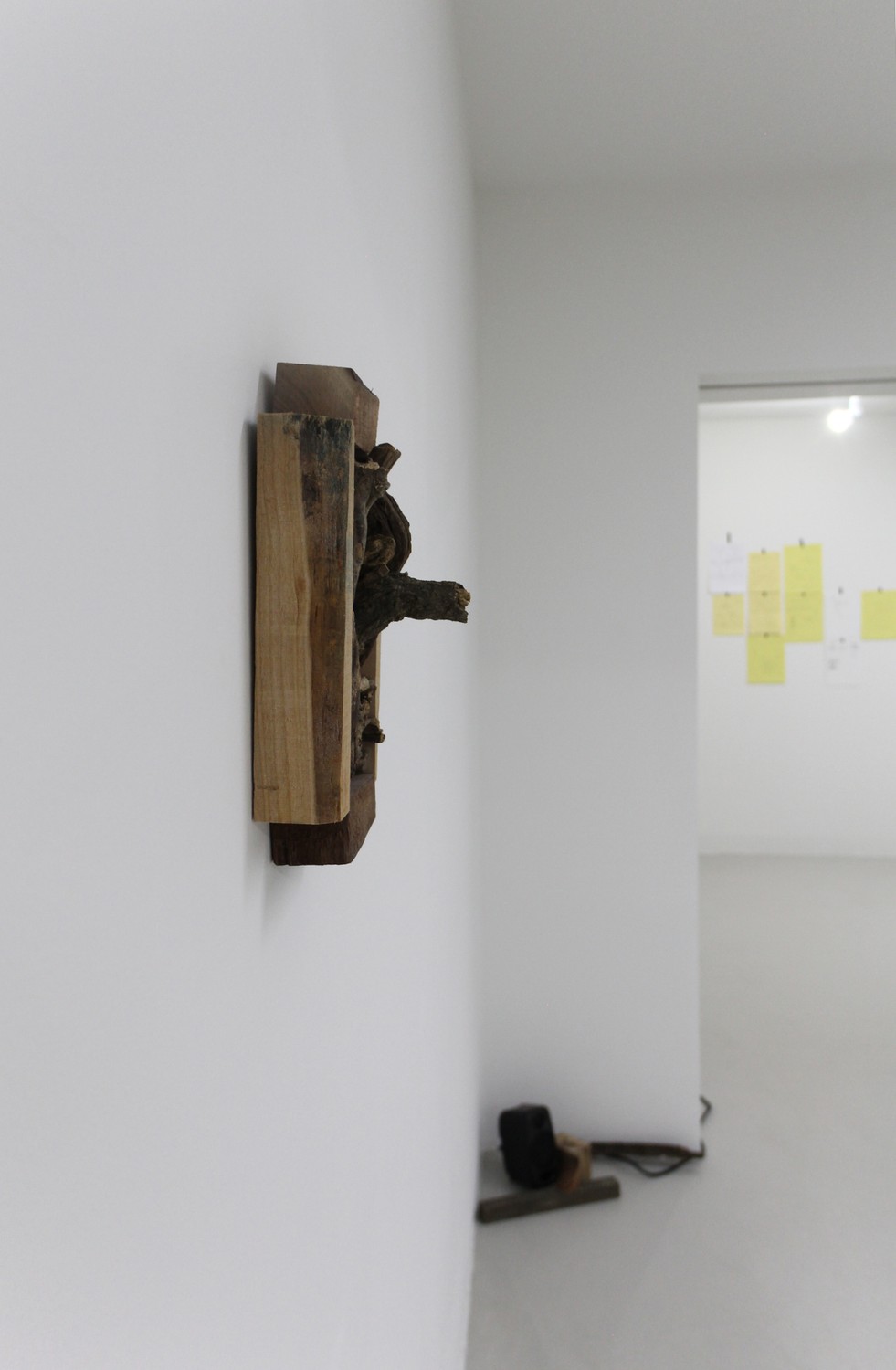이상적인 리듬머신_전시장에서의 소리
installation view1
installation view2
나머지들의 연속체 Continuum of Remainder
나머지들의 연속체 Continuum of Remainder
나머지들의 연속체 Continuum of Remainder

나머지들의 연속체 Continuum of Remainder
나머지들의 연속체 Continuum of Remainder
나머지들의 연속체 Continuum of Remainder

installation view3
스케치 Sketch
스케치 Sketch
악보 Score
엇박 Offbeats
음악가 류한길은 끊임없는 의심과 되묻기를 통해 소리를 사유의 도구로 삼으며, 그것을 질문으로 다룬다. 그는 “지금 여기서 무엇이 음악이 될 수 있는가”를 물으며 소리를 소환하고 리듬을 재구성해왔다.
전시 『이상적인 리듬머신』은 류한길의 앨범 『⑧ 리듬머신』의 마지막 트랙 제목이자, 앨범 『⑧ 리듬머신』과 소닉 픽션 『⑧ 리듬머신』의 상호 되먹임의 결과가 공간에서 구현된 것이다. 이번 전시에서 류한길은 추상적인 리듬머신을 소환하면서, 청각적 리듬과 시각적 꿈틀거림의 아귀를 맞춰보려 한다.
이번 전시에서 소개되는 작업은 류한길의 숲속 산책에서 시작되었다.
그는 숲을 거닐며 나무 조각들을 주워 모은다. 소닉 픽션 『⑧ 리듬머신』의 편집자 오롤로는 목공 과정에서 버려진, 다양한 결·크기·단면을 가진 나무 조각들을 수집해 아홉 개의 구조물을 만든다. 류한길은 그 구조물의 내부를 숲에서 온 나무 조각들로 채우고, 이를 ‘리듬머신’이라 부르기 시작한다.
소리를 다루는 음악가가 나무 조각들의 아귀를 맞춰 가며 만들어낸 이 구조물은, 리듬이 단순히 소리의 차원을 넘어 세계의 감각적 잔여들로 확장되는 전환점이자 리듬을 새롭게 상상하게 만드는 출발점이 된다. 이 과정은 다시금 소리 합성기로서의 리듬머신을 개발하는 계기로 작동한다. 여기에서 리듬은 완성된 형태가 아니라, 아귀를 맞춰 가는 과정 속에서 끊임없이 재구성되는 질문으로 제시된다.
(ENG)
Musician Ryu Hankil treats sound as a tool for thought, engaging with it through persistent doubt and recursive questioning.
Time and again, he asks: What, here and now, might become music?
In doing so, he summons sound and reconfigures rhythm—not as resolution, but as an ongoing line of inquiry.
The exhibition takes its title from the final track of Ryu’s album ⑧ Rhythm Machine, and emerges from a feedback loop between that album and an accompanying piece of sonic fiction.
In this space, rhythm slips away from the purely auditory and begins to move—visually, spatially, and materially.
It all begins with a walk through the forest.
As he walks, Ryu gathers fragments of wood, each bearing its own grain, cut, and weight. He places them into nine sculptural frames—constructed by Orolo, editor of ⑧ Rhythm Machine, using discarded pieces from the woodworking process. Ryu begins to call them “Rhythm Machines.”
These structures, crafted by a musician, mark a turning point—
a moment when rhythm expands beyond the auditory into the sensory residue of the world, and when a new imagination of rhythm begins.
This process also acts as a catalyst for developing the rhythm machine as a sound synthesiser.
Here, rhythm is not a finished form, but a question—continually reshaped through the act of aligning one piece with another.